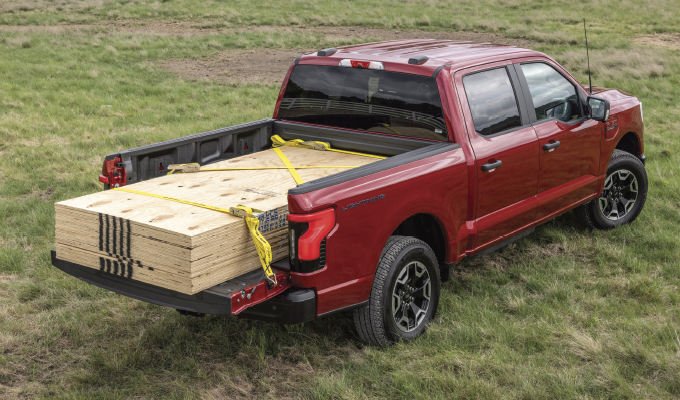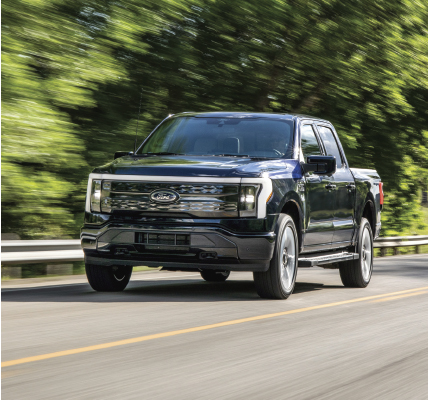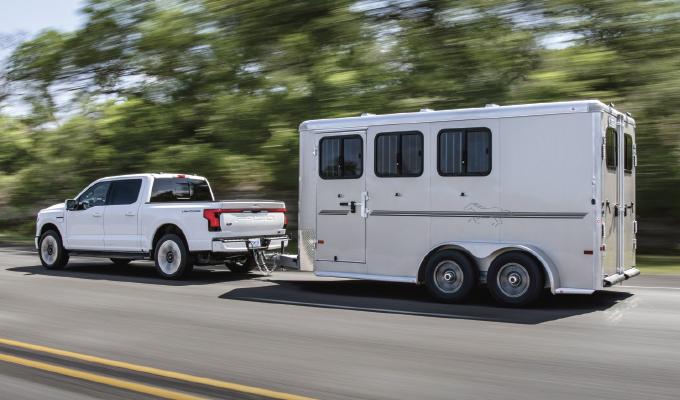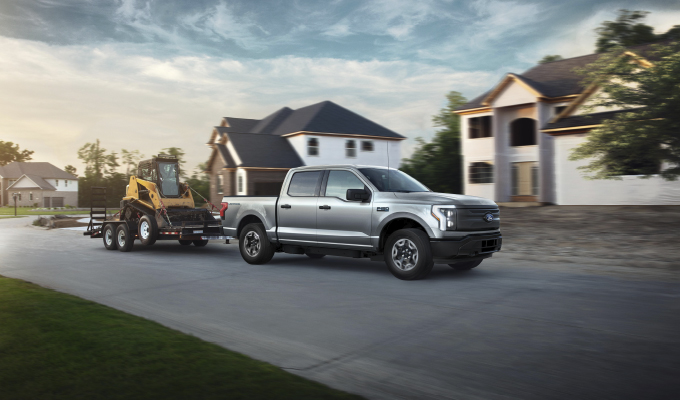As more fleets are reducing their emissions, and setting short- and long-term targets, alternative fuel vehicles, including electric vehicles are attaining more attention. As a result, Ford Motor Company, which has been the best-selling pickup truck brand in the United States for 47 years introduced the EV version of it is F-150 a couple of years ago.
It is one thing when smaller niche brands introduce an EV pickup truck, it is quite another when Ford does it. While most F-Series sales are still gas-powered vehicles, the Lightning has found a place in many fleets.

POWER
What does the Lightning bring to the table? Primarily, the range, the standard-range battery offers 240 miles, while the extended-range battery ups that to 300 (Platinum trim) and 320 (XLT/Lariat) miles. The standard battery offers 98 kWh of energy, while the extended range has 131 kWh. Both are Lithium-ion batteries.
Of the things that EVs offer, linear power is one of the main attractions. The Lightning has 775 pounds/feet of torque and between 452 (standard battery) and 580 (extended battery) horsepower on tap. This means Lightning offers more torque than conventional gas-powered performance trucks.

CAPABILITY
Power is one thing, but most work truck operators need capability, how does the Lightning stack up? As with many things on the Lightning, the capabilities are split between which battery is used. Payload is higher with the standard range at 2,235 lbs, with 1,952 lbs with the extended range. Towing numbers are flipped, as the standard range has a maximum of 5,000 lbs, with the extended range achieving 7,700 lbs. For those who need more towing capacity, the Max Trailer Tow package increase the number to 7,700 lbs (standard), 8,500 (extended Platinum), and 10,000 (extended XLT/Lariat).
How do those numbers compare to the gas-powered cousins? Max towing is 13,500 lbs, and max payload is 2,455. However, that does not tell the whole story, as the range is 8,200 lbs to 13,500 lbs of available towing capacity. Which puts the Lightning in the middle. Payload tells a similar story, as the maximum is 2,445 lbs, putting the Lightning closer to the higher capacities. It is also important to point out that the Lightning has a front trunk which gives more space, in a covered area.

SAFETY
What else does the Lightning offer? In a word, safety. Standard Ford Co-Pilot360 2.0 includes Pre-Collision Assist with Automatic Emergency Braking (includes Pedestrian Detection, Forward Collision Warning and Dynamic Brake Support), BLIS (Blind Spot Information System) with Cross-Traffic Alert, Lane-Keeping System (includes Lane-Keeping Alert, Lane-Keeping Aid and Driver Alert), Rear View Camera, Auto High Beam headlamps, Reverse Sensing System, Reverse Brake Assist and Post-Collision Braking. Optional Ford Co-Pilot360 Assist 2 offers Intelligent Adaptive Cruise Control with Stop-and-Go, Lane Centering and Speed Sign Recognition, Evasive Steering Assist, Intersection Assist, Connected Built-In Navigation (three-year trial). The final level of Ford Co-Pilot360 is Active 2 which offers BlueCruise, and park assist.
One other useful item on the Lightning is the power onboard. Standard 2.4kW Pro Power Onboard offers eight 120V outlets (with two in the cab, two in the bed, and four in the front trunk), an optional 9.6kW Pro Power Onboard with the 10 120V outlets (two in the cab, four in the bed, four in the front trunk), with an additional 240V outlet in the bed.
About the Author
Mario Cywinski is the editor of Modern Work Truck Solutions and has worked in the automotive industry for nearly 20 years, both as an automotive journalist and working for a local dealership. He is a member of the Automobile Journalist Association of Canada and has been a judge for the Canadian Truck King Challenge. He can be reached at mario@mwsmag.com.




